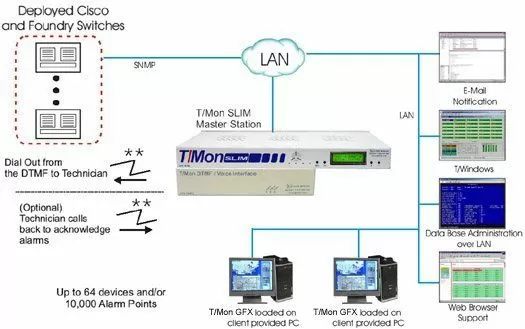Check out our White Paper Series!
A complete library of helpful advice and survival guides for every aspect of system monitoring and control.
1-800-693-0351
Have a specific question? Ask our team of expert engineers and get a specific answer!
Sign up for the next DPS Factory Training!

Whether you're new to our equipment or you've used it for years, DPS factory training is the best way to get more from your monitoring.
Reserve Your Seat Today
Overcome your cell phone coverage degradation issues by using this verbal 'call-out' feature. The T/Mon SLIM will act as your central aggregation point and provide a means of directly reporting and databasing your alarms. The primary means of reporting alarms will be from the Cisco and Foundry Switches reporting SNMP alarms over IP to the T/Mon SLIM. (The T/Mon SLIM is configured to receive alarm data from the deployed switches (alternate path reporting) in the event of LAN failure.
The technician upon alarm notification can take advantage of the T/Mon SLIM web browser interface to logon from virtually any PC with Internet access and get real time alarm traffic status. In addition the T/Mon SLIM will be able to send email (SMS) alarm messages to technician cell phones or use the DTMF Voice Box for verbal notification. The verbal notification works as follows: There will be limited non-changeable vocabulary that you will have the ability to select from to "build" the notification message.
When the DTMF voice box dials out, the person called will get an announcement and be asked to authenticate himself. After the code is successfully entered, the verbal message will then be delivered. At which time, the on call person may acknowledge or silence that particular alarm. This solution also features our original DTMF call back solution as well. The DTMF/Voice Interface for T/Mon lets you acknowledge or silence alarms from the field, using any touch-tone/cell phone. As easy and familiar as a voice-mail system, the DTMF/Voice Interface uses recorded voice prompts to guide you through a menu of options, and you just select your choice by pressing a phone button. The T/Mon NOC keeps track of who acknowledges the alarms over the phone. This device, as described above, will be responsible for the "verbal dial out".